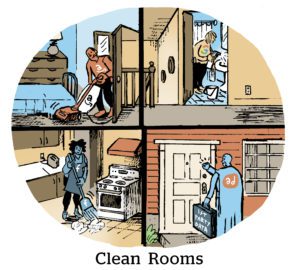 The retail data revolution is constrained by its laser-focus on advertising, if you ask Brian Archey, Conagra Brand’s sr. director of data science and analytics.
The retail data revolution is constrained by its laser-focus on advertising, if you ask Brian Archey, Conagra Brand’s sr. director of data science and analytics.
Clean room data environments are the playgrounds of digital marketers, who use them for audience extension and analytics. But these cloud-based services hold more promise as business intelligence tools, Archey said.
Cloud data is bigger than advertising, and can be used to inform supply chain, packaging, forecasting and analytics and sales.
The Conagra data science team has already shown how cloud-based data sharing can be used for “hypothesis-testing across the organization.”
As part of a beta program, Conagra has been using Kroger’s 84.51° Collaborative Cloud in this way for the past year. The cloud launched to all customers this month.
AdExchanger caught up with the Conagra data wizard, who joined four years ago after spending time as a media planner at Starcom MediaVest, Tribune Interactive (the newspaper publisher’s online data subsidiary) and Cars.com.
AdExchanger: How do you connect advertising data and analytics to your supply-chain management, or vice versa?
BRIAN ARCHEY: I’ll try not to get myself in trouble giving away anything that is proprietary. But I’ll say “advertising” and “supply chain” are these entities that have been thought of separately. If you look at the retail cloud data offerings in the market, for instance, they’re for ad analytics and activation.
We think of it as a circular philosophy.
The old model is a linear model. You look at sales, see a downward trajectory for a product or sales among a certain segment. Therefore, you run marketing as a lever to improve performance.
We can get at how consumers responded to certain marketing content, and the impact on sales. These are the typical inputs for advertising ROI. But those could be inputs for a consumer behavior we want to influence, which could go down to packaging or supply chain. If we can influence consumer behavior in a way we want to replicate, then that comes back to advertising.
When you have marketing, supply chain and sales informing each other, that’s a system driving on all engines.
The idea of retail data collaborations isn’t new, but what is new about retail data-sharing capabilities now?
Real-world digitalization [online cash registers, for instance] needed to reach a certain point to synthesize large chunks of data. That’s been the game changer over the past five to 10 years.
And, to be honest, there’s the issue of trust between the retailer and the manufacturer. It took time for the industry to come to agreement that we’re in this together: that if we can allow a certain amount of data collaboration, we can get to better insights and better products.
Was the bigger obstacle trust, or the tech development?
It was technically impossible 10 years back. But the real power is from trust in the partnership. Otherwise, with the data they have, companies individually can go only so far. When you start to think about the insights you can glean between a manufacturer and a retailer, that’s really what this has provided us.
There have been so many retail media and cloud data partnership announcements in the past couple years though.
With many retail media and cloud integrations, the brand builds audience segments to activate against, passes their targeting parameters to the retailer’s machine learning and uses a cloud portal built by the retailer. Then the platform starts targeting.
But our data partnership with 84.51° is much broader. We’re able to access the data for all sorts of hypothesis-testing across the organization.
“Hypothesis-testing across the organization”?
One example: In the run-up to Thanksgiving last year, we had questions about what the holiday would look like. Will people have more but smaller events? Will online grocery ordering impact Thanksgiving meal patterns? [Conagra sells meat products, not to mention its sides, sauces and desserts with a big stake in Thanksgiving dinner].
We were partners at the time with Kroger, so we started to set up these exploratory models ahead of the Thanksgiving holiday to see if we could tell which direction some of these trends were going.
It meant we could look at the size or pieces of turkeys being sold. Different kinds of side products are purchased based on those combinations. We can see in the data that Thanksgiving dinner shoppers for smaller groups might go for smaller turkeys or pieces, and perhaps hot dogs [Conagra also owns Hebrew National] or other non-traditional fare.
And it means we can do the same type of analysis around the next holiday.
Now we’re testing hypotheses based on individual households that have been anonymized and tracked for a year or more: Which consumer habits from last year will stick? Do we see the same patterns in online grocery shopping?
It helps in terms of pointing our digital marketing efforts. But also informs our supply-chain activity.
Is ecommerce a priority for a store-based brand like Conagra?
The answer is yes.
There’s an element of direct-to-consumer sales that we have explored and intend to grow. But think about all the digital shelves where our products exist. Consider Kroger’s online grocery, Amazon, a service like Instacart.
Especially with the pandemic, there’s been such rapid adoption. People who probably would never have done groceries online in their lifetime actually became fans of online ordering.















